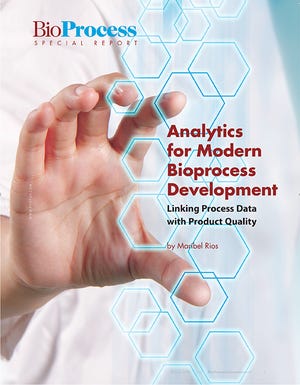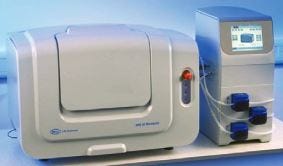Twelve years ago, about the same time the US Food and Drug Administration was putting the finishing touches on its quality by design (QbD) and process analytical technology (PAT) guidelines, I wrote an article about breakthrough pharmaceutical educational programs. That article included the perspectives from a few members in academia of the future essential skills for pharmaceutical students. At the time, bioinformatics and computerized industrial process modeling were relatively new disciplines, but their importance in future manufacturing was clear. Several educators agreed that problem solving, communication, and mathematics were invaluable. One of my favorite quotes came from James Pierce, PhD, then director of undergraduate studies at the University of the Sciences in Philadelphia. He said, “It doesn’t really matter what field you are studying… you’re going to have to be skilled in your ability to manipulate databases, to use computers to study problems, and to analyze data.”
Today QbD and PAT are we...
The two major bioprocess fluids — culture media for upstream production and buffers for downstream processing — are classic single-use products. They are used once and then disposed of. The two basic options for both differ by physical state: powdered media and buffers (“powders” for in-house preparation of liquids by end users) and bulk liquid culture media and buffers, which are fully prepared by their suppliers (“liquids”). We conducted market research studies comparing the benefits and risks (value proposition) to bioprocessing facilities of using bulk liquids and powders — along with related trends.
Prepared liquids are universally used at the smallest scales. They are packaged in 1-L bottles for laboratory-scale applications. Today, nearly all facilities switch to using powders without consideration of alternatives as bioprocessing is scaled up. But modern trends are changing that equation: expanded single-use applications, shifts toward continuous bioprocessing, smaller-scale bioreactors in use at ...
Quality by design (QbD) is a systematic approach to drug development. It begins with predefined objectives and emphasizes product and process understanding and process control, all based on sound science, data-based decision making, and quality risk management (QRM). As introduced by the US Food and Drug Administration (FDA), QbD brings modern drug development methodologies to chemistry, manufacturing, and control (CMC) teams working on biologics, pharmaceuticals, and vaccines. The innovations associated with QbD are not so much the development concepts (which have been proven in multiple industries for well over 20 years). Rather, such innovations are the application of those principles in the development, submission, and manufacturing of drug products and drug substances.
QbD was introduced over 10 years ago; however, regulatory agencies are now in the process of moving it from recommended (optional) to mandatory in drug submissions and filings. QbD has the following 10 guiding principles:
As stated in ...
Sponsors developing and manufacturing protein therapeutic products use a variety of analytical tests (e.g., cell-based potency and chromatographic assays) to assess quality attributes of their active ingredients and drug products. Those tests are used to assess product quality in a number of activities, including characterization, comparability, lot release, and confirmation product quality and stability.
Reference standards play a critical role in calibrating and confirming the suitability of such tests and in helping analysts to draw scientifically sound conclusions from data obtained. Different organizations create and use these standards in various ways, with approaches that are often unique to the type of standard material (e.g., in-house reference materials specific for certain product quality attribute testing or in-house primary standards).
In recent years, both experienced and relatively new manufacturers have shown increased interest in developing biopharmaceuticals. Consequently, there is signi...
In cancer treatment, early diagnosis and targeted therapies are assumed to yield the highest cure rates. However, most current methods are limited by their low sensitivity to early disease and a lack of specificity for targeted cell killing. Newly developed, activatable immunoconjugates assist in the accurate detection of cancer through in vivo imaging with high target-to-background contrast (
1
,
2
). They also provide for the possibility of highly specific, light-mediated treatment with minimal effects on healthy cells surrounding tumors (
3
). In fact, the optical strategies for designing highly targeted and specific diagnostic and therapeutic technologies are identical. The major difference in the two approaches is the form in which the emitted energy is released: as light for diagnostic purposes and as heat and/or oxidation for therapeutic purposes. Here I discuss strategies for designing activatable immunoconjugates for use in both diagnosis and treatment of cancer.
PRODUCT FOCUS:
Antibody–drug con...
Monoclonal antibodies (MAbs) are the fastest growing segment in the biopharmaceutical industry because they are potentially efficacious in the treatment of diseases such as cancer and autoimmune disorders (
1
,
2
). With steadily increasing demand for efficient and affordable therapies, speed to clinic/market is important, and biopharmaceutical companies push multiple drugs into development each year to ensure business sustainability (
3
,
4
,
5
,
6
).
Downstream purification process development for therapeutic MAbs is a critical step on their path to reach clinical trials and beyond (
7
,
8
,
9
). However, developing these processes under compressed timelines can be challenging because of a need to define many operating parameters and perform numerous empirical experiments that demand both time and resources. The most common MAb purification schemes use protein A affinity chromatography for capture, followed by one, two, or three chromatographic steps for polishing (
10
,
11
).
PRODUCT FOCUS:
MONOCLONAL...
Cell-based therapies hold promise for treating many acute and chronic diseases (
1
). Optimism surrounding that therapeutic potential has driven the initiation of multiple clinical trials in pursuit of such treatments. Procedures for preparing these therapeutic agents begin with selective isolation of cells from desired tissues. That is followed by ex vivo expansion of cells of desired phenotype and functionality. Once expanded to acceptable levels, cells are stored to preserve their viability during transportation to treatment facilities. The final step in the process of cell therapy treatment involves infusion of cells into patients through a number of administration routes (
2
,
3
).
Although significant progress has already been made within each step of that process, specific challenges still require addressing in further developmental studies if cell therapies are to become widely available. Advances in cell characterization techniques, media formulation, and identification of specific cell markers;...
Plastic syringes are viable alternatives to glass syringes in the biopharmaceutical market. They have two main advantages over glass syringes: their break resistance (specifically on the finger flange) and their ability to maintain tighter dimensional tolerances and less variability (because of the flexible molding process). Both attributes are critical when a 1-mL long prefilled syringe is used with an autoinjector device.
The high break resistance of plastic syringes can reduce the number of rejected units during a fill–finish process. And when used in autoinjector devices, plastic syringes can prevent failures and product recalls. The low dimensional variability exhibited by plastic syringes also can help ensure proper fit and consistent functionality within autoinjector devices.
We performed studies to compare such attributes using syringes made of cyclic olefin polymer — specifically, Daikyo Crystal Zenith (CZ) 1-mL long syringes — and glass 1-mL long syringes. CZ 1-mL long insert molded syringes wit...







